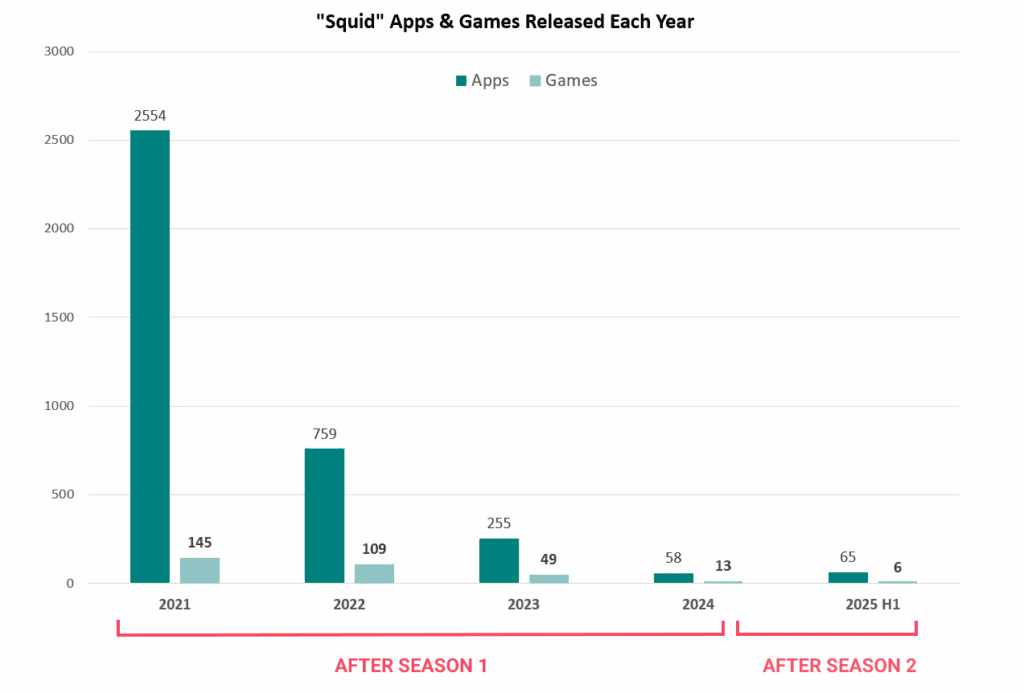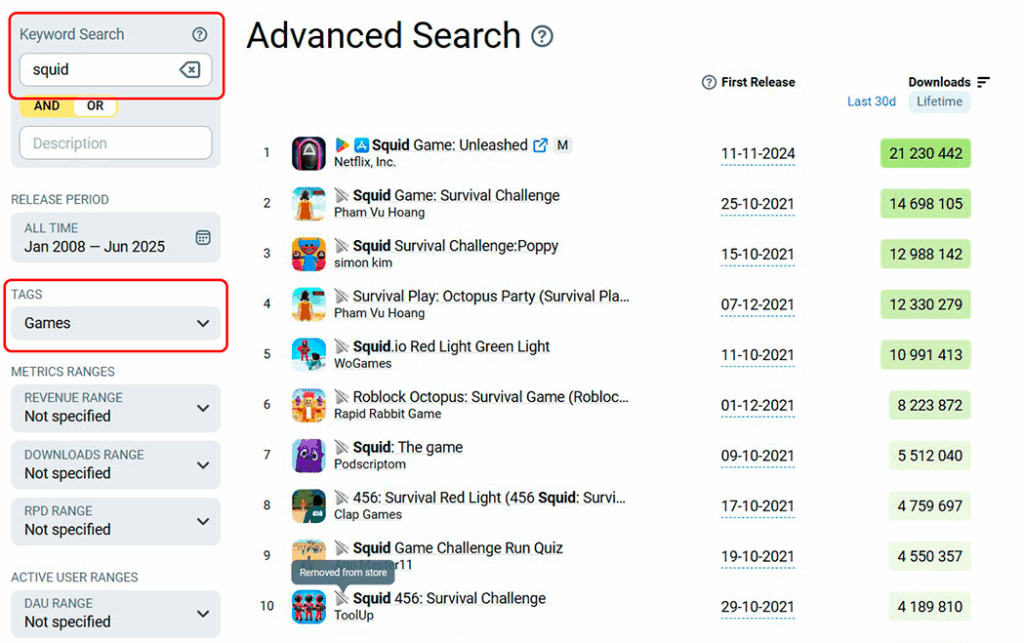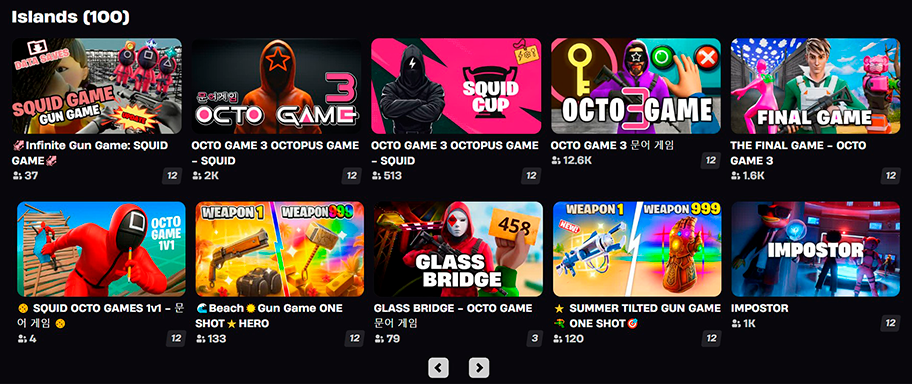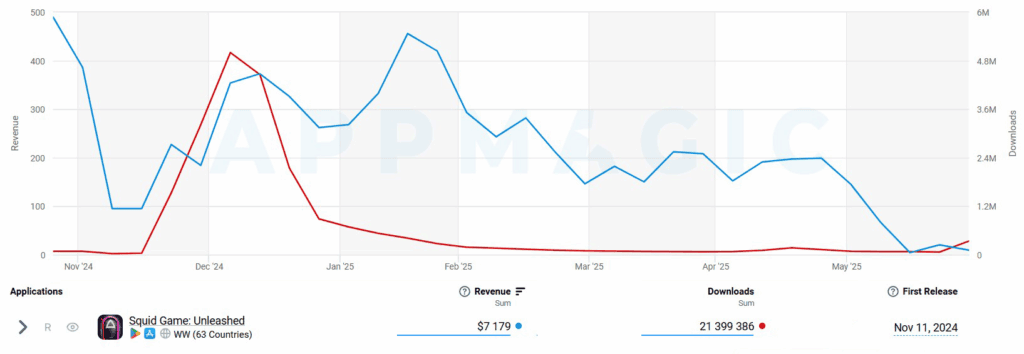When Squid Game first launched in 2021, mobile developers wasted no time capitalizing on its global success.
According to AppMagic data, that year alone saw 2,554 new apps using the “squid” keyword hit the stores—145 of them being games. Naturally, the momentum didn’t last forever. In 2025, with the final season airing, that number dropped to just 65 new “squid”-themed apps.
So, did the industry simply move on from one of the decade’s most iconic shows?
Not quite. The reality is more nuanced.

Resource: AppMagic
As the data shows, 322 “squid” mobile games have been released since 2021. And much like the show’s deadly premise, survival was tough—305 of those titles have already been removed from stores.
But that doesn’t mean they have failed. The majority were hypercasual games: low-cost, fast-to-market, and built for instant monetization through cultural relevance. These titles were never meant to endure; they were designed to capitalize on spikes in attention.
We saw a similar pattern in our TapNation case study on “Skibidi” games: quick releases, strong profits, and a fast exit.

The UGC Boom: Squid Game in Roblox and Fortnite
Squid Game found new life through user-generated content. In Roblox, players recreated scenes like “Red Light, Green Light” and the infamous glass bridge, turning them into multiplayer modes with strong replayability.
The launch of Season 2 in December 2024 sparked a UGC surge on the platform, driving 21.7 million downloads that month and hitting an all-time peak of 24 million installs in January 2025.

Fortnite, now a fully-fledged UGC ecosystem, saw a similar wave. Players created dozens of Squid Game-themed “islands,” transforming iconic moments into fast-paced challenges. As of now, there are around 100 live maps, many pulling in thousands of players organically.
This trend highlights that Squid Game remains a compelling IP, not just visually, but as a source of gameplay structure. When given creative tools, players actively rebuild these experiences themselves.

Netflix Arrives Late
Netflix eventually released an official Squid Game mobile title in November 2024. With 20 million installs to date, the numbers are respectable, but fall short of the show’s cultural reach.
The problem wasn’t the IP, it was the timing. The mobile trend had already cooled off by the time the game arrived, missing the explosive 2021–2022 window. On top of that, releasing it just eight months before the final season didn’t leave much room to gain momentum or sustain engagement.

One Last Round
With the final season now live, there’s still time to squeeze value from the IP—especially through short-term tactics proven to work:
- Use trending keywords and visuals for ASO.
- Create ad creatives that lean into recognizable Squid Game themes.
- Integrate relevant in-game content that fits your gameplay model and resonates with players.
These approaches have delivered real results in past cycles. Even if these games don’t last, they can still bring in strong installs and fast returns.
Squid Game has left its footprint on mobile gaming. It’s not the first cultural phenomenon to do so, and it won’t be the last. For studios, it’s a timely reminder: pay attention, move quickly, and don’t miss the next big wave.
For a more in-depth look at Squid Game’s impact, you can visit AppMagic’s website.





